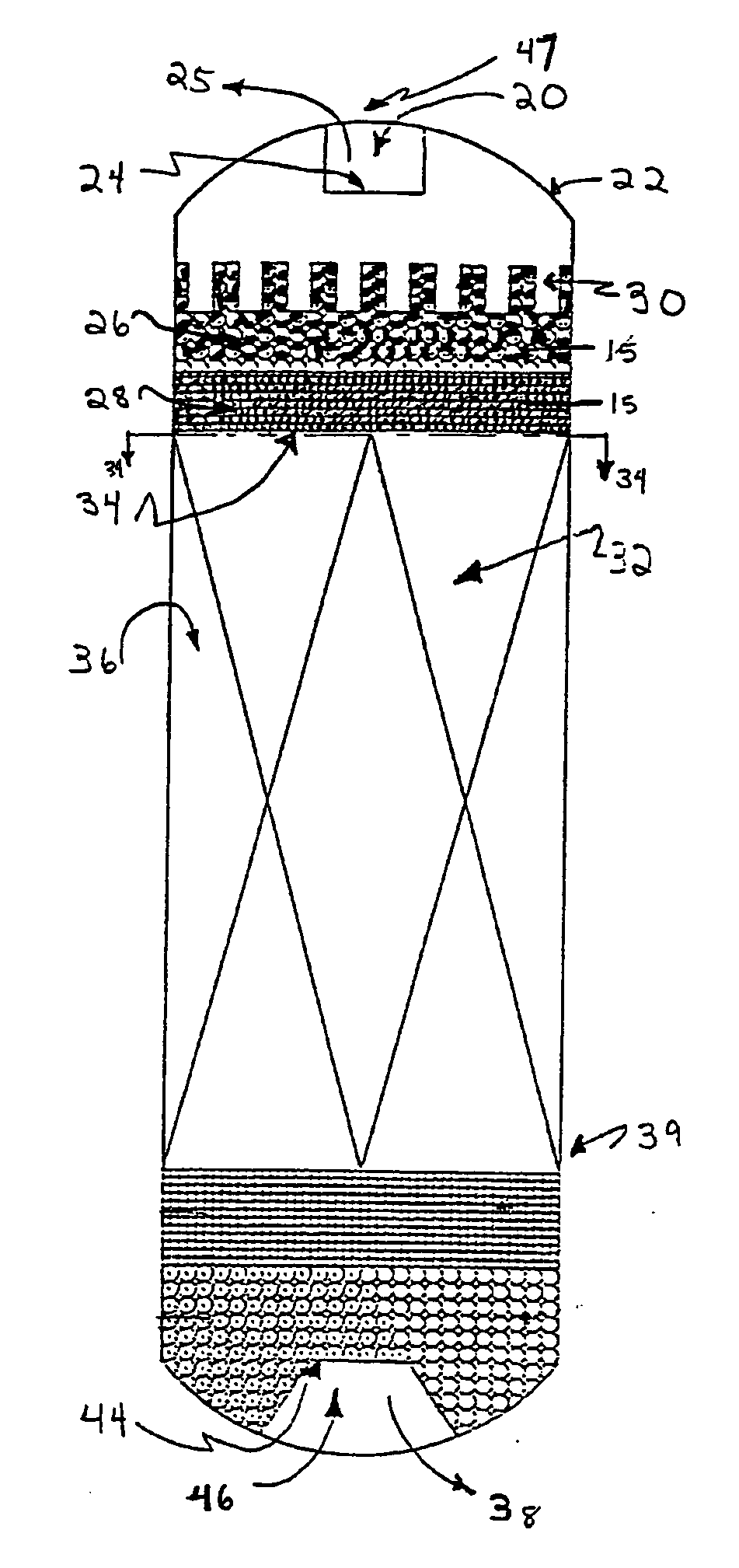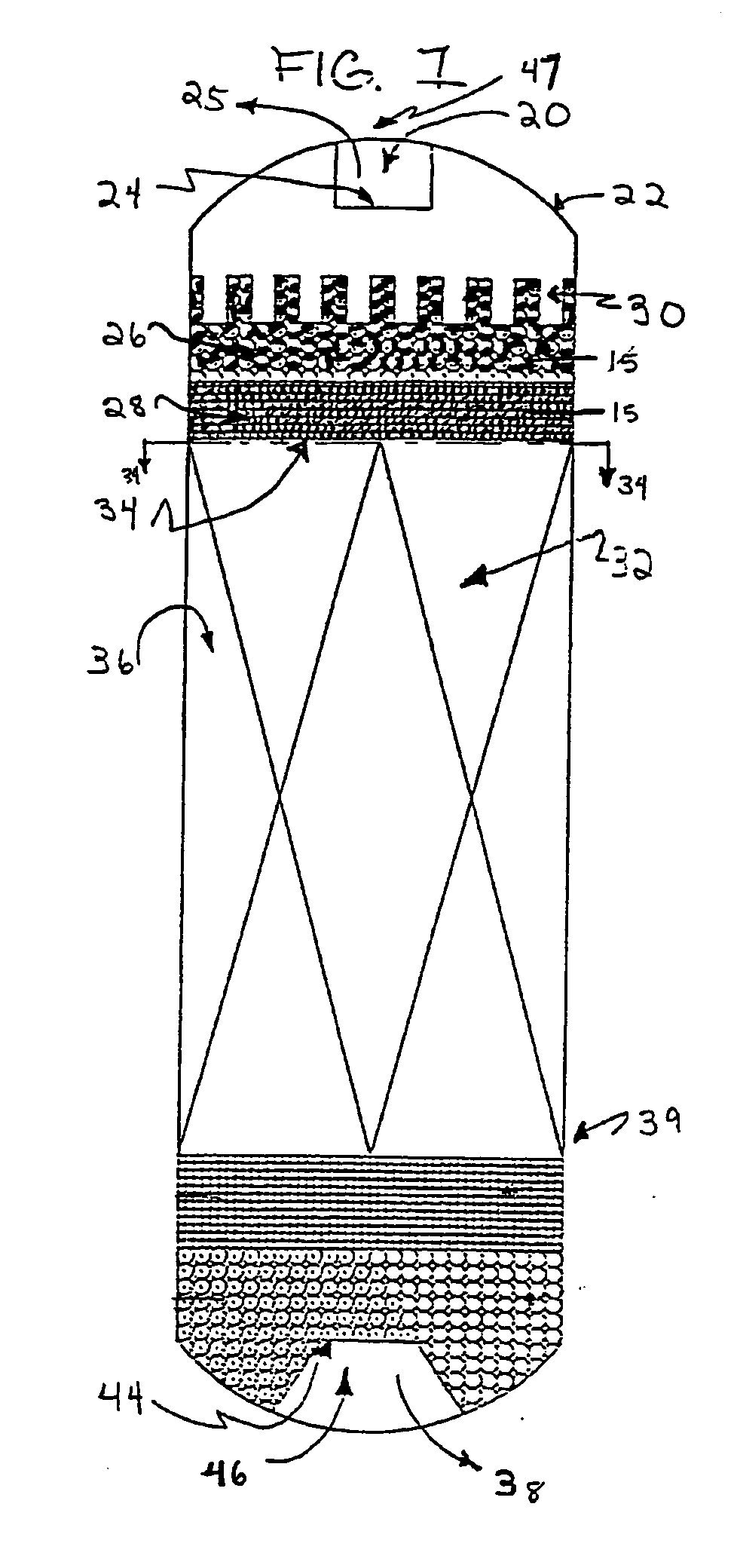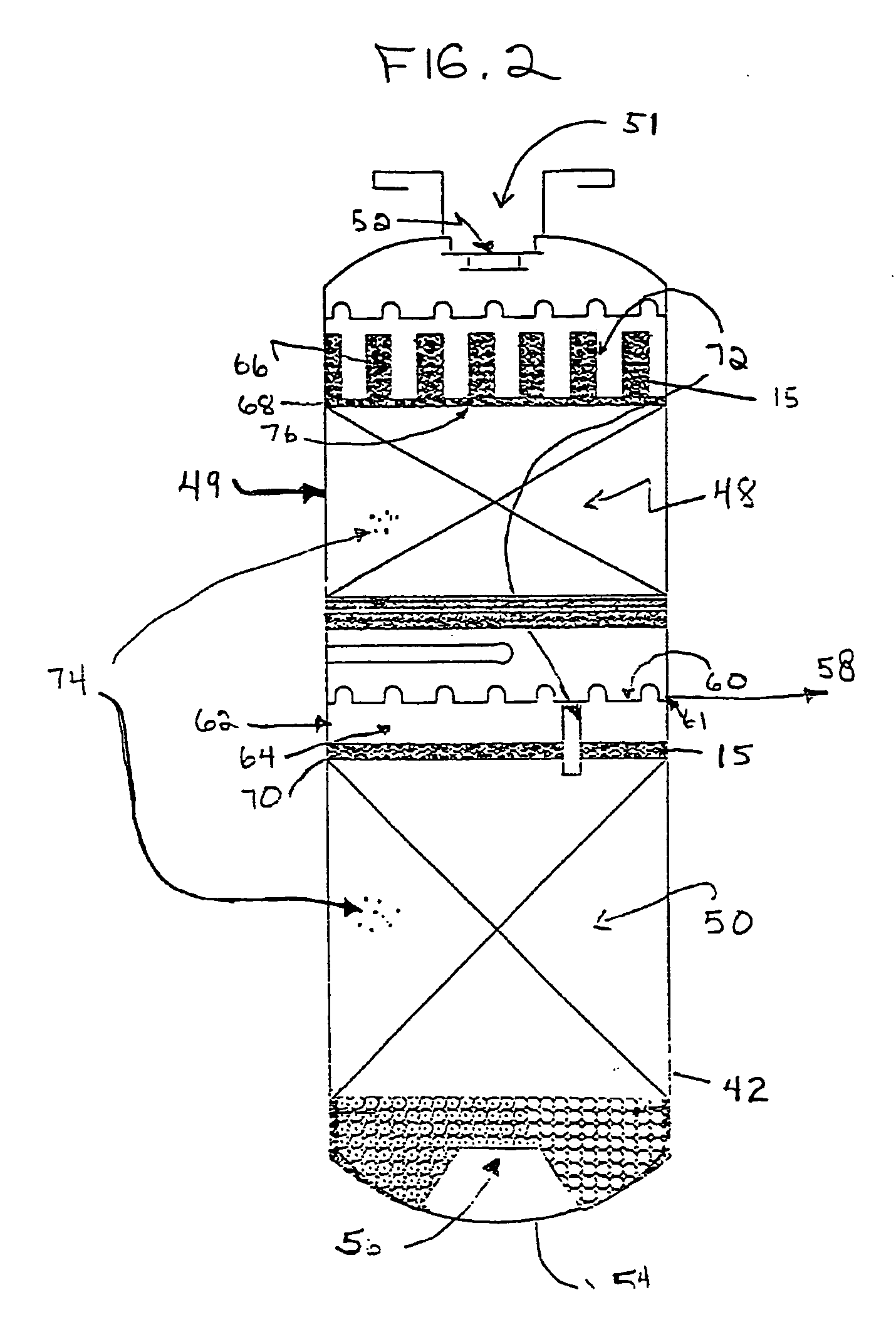Filtering medium and method for contacting solids containing feeds for chemical reactors
a technology of chemical reactors and filtering mediums, applied in the direction of filtration separation, physical/chemical process catalysts, separation processes, etc., can solve the problems of affecting the filtration efficiency of solids, etc., to achieve the effect of reducing the volume of ceramic materials, reducing capital costs, and improving the filtration of solids
- Summary
- Abstract
- Description
- Claims
- Application Information
AI Technical Summary
Benefits of technology
Problems solved by technology
Method used
Image
Examples
Embodiment Construction
[0043] With reference to FIG. 1, unless otherwise noted, for treatment of an organic-based feed stream, a single fixed bed chemical reactor 22 is shown. If the reactor 22 is of a downflow configuration, the contaminated organic-based feed stream 20 will enter the reactor 22 at the inlet 24 and exit the outlet 44 as stream 38. The invention may be used in fixed bed chemical reactors. Preferably, the present invention is used in one or more fixed beds, in either an upflow or downflow or radial flow configuration. As used herein, the term “chemical reactors” may include hydrotreaters, hydrorefiners, hydrocrackers, reformers, alkylation, isomerization and polymerization reactors, among others. Contaminants typically found in the feed stream include dirt, iron oxide, iron sulfide, asphaltenes, coke fines, catalyst fines, sediments or other entrained foreign particulate material.
[0044] Still with reference to FIG. 1, a layer of ceramic filter units 15 (FIGS. 4-16), at least some having a...
PUM
| Property | Measurement | Unit |
|---|---|---|
| widths | aaaaa | aaaaa |
| lengths | aaaaa | aaaaa |
| diameters | aaaaa | aaaaa |
Abstract
Description
Claims
Application Information
 Login to View More
Login to View More - R&D
- Intellectual Property
- Life Sciences
- Materials
- Tech Scout
- Unparalleled Data Quality
- Higher Quality Content
- 60% Fewer Hallucinations
Browse by: Latest US Patents, China's latest patents, Technical Efficacy Thesaurus, Application Domain, Technology Topic, Popular Technical Reports.
© 2025 PatSnap. All rights reserved.Legal|Privacy policy|Modern Slavery Act Transparency Statement|Sitemap|About US| Contact US: help@patsnap.com



